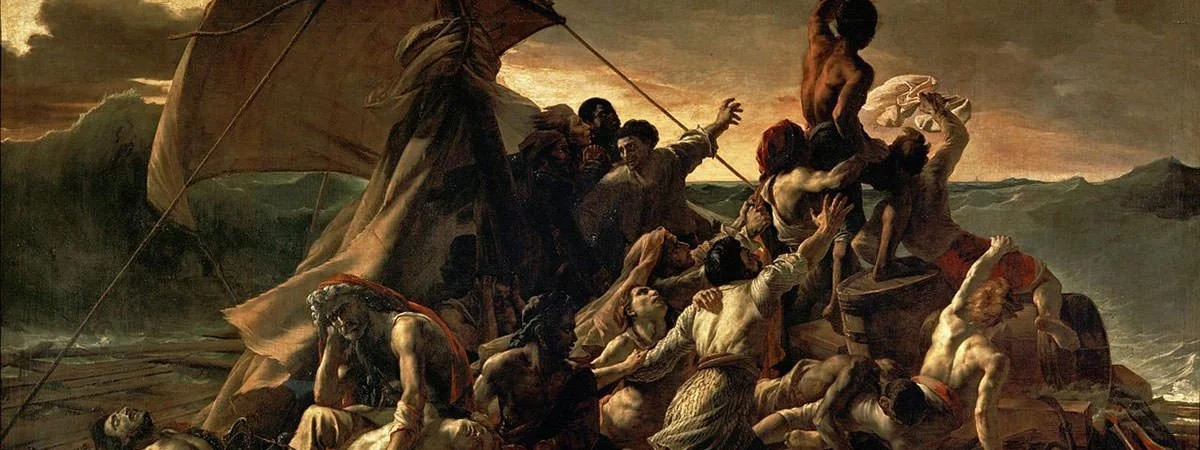There have been many masterpieces created by French painters over the course of the rich artistic history of their nation. Neoclassicism, which drew inspiration from ancient Greco-Roman culture, rose in France in the middle of the 18th century. 19th century saw a shift in style to Romanticism, which laid emphasis on emotion and individualism; and on glorification of nature. Liberty Leading the People is the most renowned French Romantic work. Romanticism was followed by the influential Impressionism, which made France the center of the art world. Many of France’s most famous paintings were created during this period including Claude Monet’s Nympheas series. Impressionism gave way to Post-Impressionism and other movements which played a key role in taking the world towards modern art. Here are the 10 most famous French paintings.
#10 The Card Players
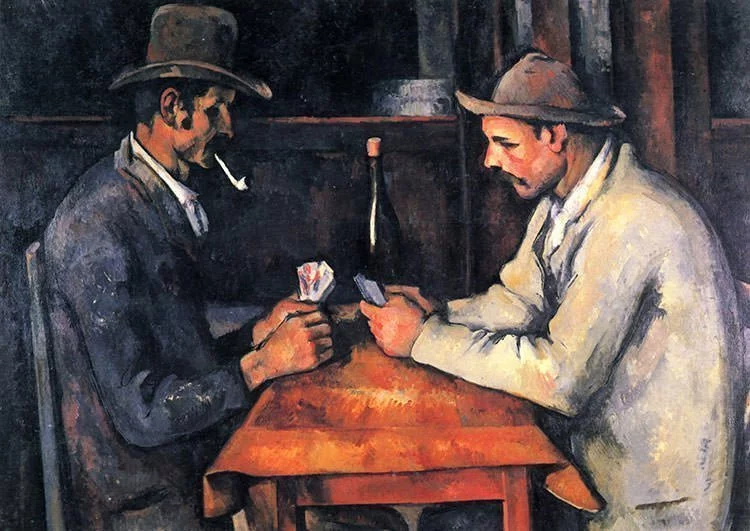
| French Title: | Les Joueurs de cartes |
| Location: | Various Museums |
| Artist: | Paul Cézanne |
| Year: | 1890s |
Broadly, Post-Impressionism describes French art style from mid 1880s to early 1900s. It extended Impressionism while rejecting its limitations; and laid emphasis on abstract qualities and symbolic content. A masterpiece of Post-Impressionist art, The Card Players series was painted in the final period of Paul Cezanne’s work, which is considered his best period. The paintings depict Provencal peasants engrossed in playing cards and smoking their pipes. They are noted for their lack of drama, narrative and conventional characterization. In 2011, one version of The Card Players was sold for more than $250 million, making it the most expensive work of art ever sold. It held the record till February 2015 when Gauguin’s When Will You Marry? fetched close to US $300 million.
#9 The Death of Marat
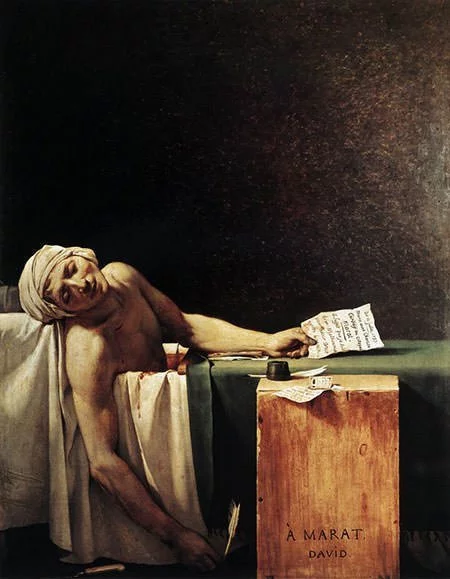
| French Title: | La Mort de Marat |
| Location: | Oldmasters Museum, Brussels, Belgium |
| Artist: | Jacques-Louis David |
| Year: | 1793 |
Jean-Paul Marat was a journalist and politician who was one of the most radical voices of the French Revolution. His paper, L’Ami du peuple (Friend of the People), was the most celebrated radical publication of the revolution but it was also considered reckless as it instigated violent and rebellious behavior. Charlotte Corday, who came from a minor aristocratic family, blamed Marat for the September Massacre during the Reign of Terror. She gained entrance to his room on the pretext that she had information of counter-revolutionary activities. Marat, who spend much time in his bathtub due to a skin condition, was fatally stabbed by Charlotte on 13th July 1793. She was later tried and executed. The Death of Marat, which shows the radical journalist lying dead in his bath, is one of the most famous pictures of the French Revolution. It is also the most famous work of Jacques-Louis David, the leading French painter of his era.
#8 A Sunday Afternoon on the island of La Grande-Jatte
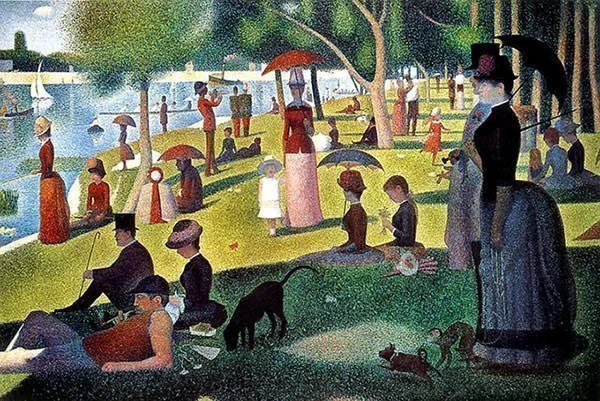
| French Title: | Un dimanche apres-midi s l’lle de la Grande Jatte |
| Location: | Art Institute of Chicago, U.S. |
| Artist: | Georges Seurat |
| Year: | 1886 |
Georges Seurat was an innovative artist who devised two prominent painting techniques known as chromoluminarism and pointillism. This painting is the most well-known and one of the best examples of pointillism, a style in which small, distinct dots of pure color are applied in patterns to form an image. Seurat spent two years on the work, creating numerous sketches of the various figures in order to perfect their form. A Sunday Afternoon is considered the greatest masterpiece of Georges Seurat. More importantly, it is regarded as a milestone of late 19th century art as it altered the direction of art by initiating Neo-impressionism, an important early artistic movement of the modern era.
#7 Dance
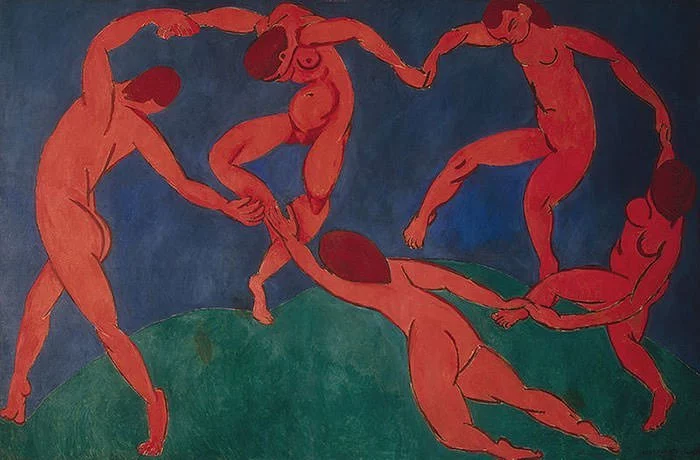
| French Title: | La Danse |
| Location: | Hermitage Museum, Saint Petersburg, Russia |
| Artist: | Henri Matisse |
| Year: | 1910 |
Along with Pablo Picasso and Marcel Duchamp, Henri Matisse is considered one of the most influential figures of modern art. Along with Music, this painting was created by Matisse as part of a two painting commission for Russian art collector Sergei Shchukin. It shows five dancing figures, painted in a strong red, against a simplified green landscape and deep blue sky. The painting exudes “primitive” energy and has been deliberately painted in an unsophisticated and childish way. La Danse is considered a key point in the development of modern painting, remains hugely influential, and is the most famous work of Henri Matisse.
#6 Impression, Sunrise

| French Title: | Impression, soleil levant |
| Location: | Musée Marmottan Monet, Paris, France |
| Artist: | Claude Monet |
| Year: | 1872 |
Impressionism was an art movement that emerged in France in the middle of the 19th century. Among other things, it is is characterized by accurate depiction of light, candid poses and vivid colors. This painting is famous for giving a name to the Impressionist movement and has now become its quintessential symbol. It was not well taken by the critics and the term Impressionist was coined in a satirical review by Louis Leroy. The Impressionist movement, however, soon became so popular that it spread to music and literature as well. The subject of the painting is the harbor of Le Havre in France. Impression, Sunrise is noted for very loose brushstrokes that suggest rather than define it. Monet uses color as the main factor to capture the very essence of the scene.
#5 The Raft of the Medusa
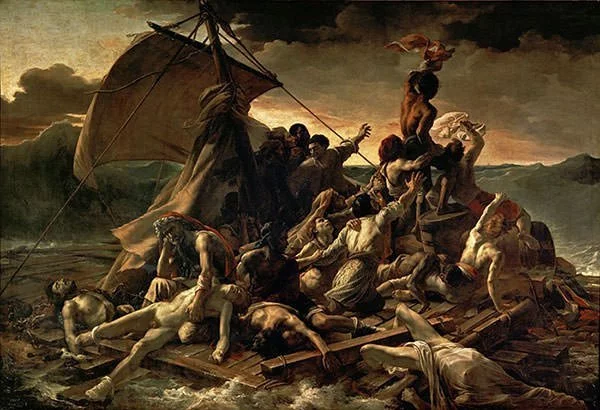
| French Title: | Le Radeau de La Méduse |
| Location: | Louvre Museum, Paris, France |
| Artist: | Théodore Géricault |
| Year: | 1819 |
Méduse was a French warship which fought in the Napoleonic Wars. Though it survived the battles, it crashed in a sandbank in July 1816 while transporting people to Senegal. The 400 people on board had to evacuate; out of which 151 were put on a raft. These men on the raft had to go through a terrible ordeal. Many were washed into the sea by a storm; others rebelled and were killed by officers; the survivors engaged in cannibalism; and when supplies ran low, injured men were thrown into the sea. After 13 days on sea, the raft was found with only 15 men surviving. The event became an international scandal. Théodore Géricault thoroughly studied the incident before creating this masterpiece. The Raft of the Medusa proved to be hugely influential in French art; is considered an iconic work of French Romanticism; and has immortalized the incident it depicts.
#4 Dance at Le moulin de la Galette
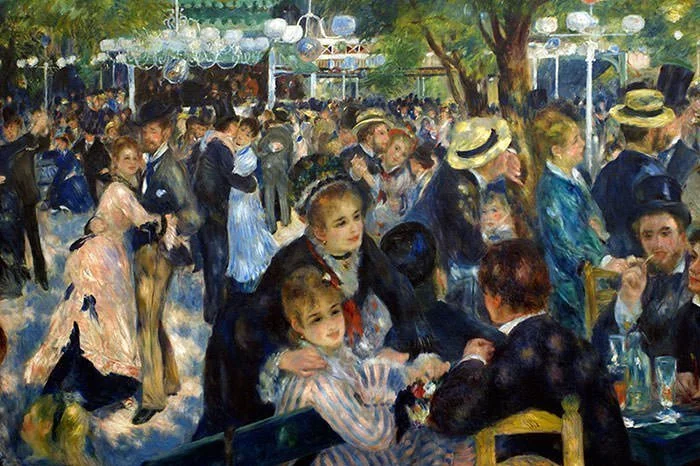
| French Title: | Bal du moulin de la Galette |
| Location: | Musée d’Orsay, Paris, France |
| Artist: | Pierre-Auguste Renoir |
| Year: | 1876 |
This painting depicts a Sunday afternoon at Moulin de la Galette in the district of Montmartre in 19th Century Paris. Moulin de la Galette was an open-air dancehall and café that was close to Renoir’s home. He frequently attended Sunday afternoon dances at this café and enjoyed watching the happy couples. In the painting, Renoir masterfully links the art of collective portrait, still life and landscape painting. The canvas of the painting was unique due to its size. It was Renoir’s most ambitious figure painting and no artist before him had created a canvas of this magnitude for capturing an aspect of daily life. One of Impressionism’s most celebrated masterpieces, Bal du moulin de la Galette has been described as “the most beautiful painting of the 19th century”.
#3 Olympia

| Location: | Musée d’Orsay, Paris, France |
| Artist: | Édouard Manet |
| Year: | 1863 |
This painting depicts a reclining nude woman attended by a maid. When it was first exhibited at the 1865 Paris Salon, it caused a huge controversy; not because of Olympia’s nudity but because there are a number of details in the painting which identify her as a prostitute. These include the orchid in her hair, her bracelet, pearl earrings and the oriental shawl on which she lies. Also, the painting has a black cat, which traditionally symbolized prostitution. Olympia was inspired by Titian’s Venus of Urbino and several other paintings; but unlike these works, it did not depict a goddess or a court lady but a high-class prostitute. The most famous aspect of the painting is the confrontational gaze of Olympia; which is often referenced as the pinnacle of defiance toward patriarchy. Manet’s Olympia is perhaps the most famous nude of the 19-century.
#2 Liberty Leading the People
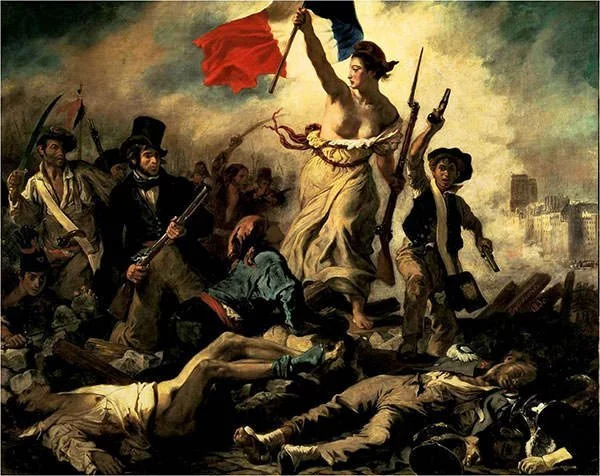
| French Title: | La Liberté guidant le peuple |
| Location: | Louvre Museum, Paris, France |
| Artist: | Eugène Delacroix |
| Year: | 1830 |
Liberty has existed as a goddess in many cultures and during the French Revolution, many allegorical personifications of ‘Liberty’ appeared in France. Since then the figure of Liberty is viewed as a symbol of France and the French Republic. This painting commemorates the July Revolution of 1830 in which King Charles X of France was overthrown. It shows Liberty as both a goddess and a robust woman of the people. She holds the flag of France in one hand and a firearm in her other hand. Eugene Delacroix is regarded as the leading French Romantic painter. Liberty Leading the People is not only his most famous painting but also an iconic French artwork which has inspired many artists since its creation.
#1 Water Lilies
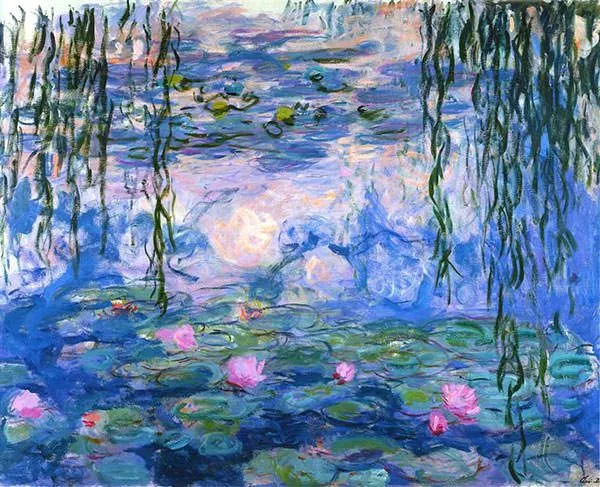
| French Title: | Nympheas |
| Location: | Various Museums |
| Artist: | Claude Monet |
| Year: | 1896 – 1926 |
The “Nympheas” series of Monet consists of approximately 250 oil paintings which were created by him during the last 30 years of his life. They are now on display in museums all around the world. The dazzling complexity of color and light in the panels opens the viewer’s eyes to the incredible diversity of nature and to the depth and mystery of the life it sustains. An amazing thing about these works is that Monet’s eyesight was badly deteriorating due to cataract while he painted most of these masterpieces. Claude Monet’s water-lily paintings are among the most recognized and celebrated works of 20th Century and they hugely influenced following generations of artists. They have been described as “The Sistine Chapel of Impressionism”.

